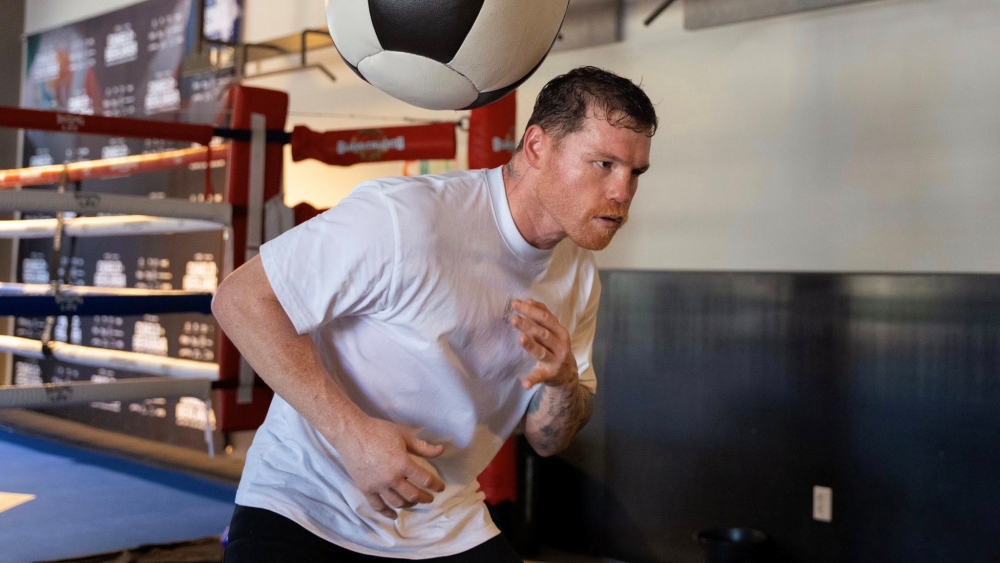Being a switch hitter is one of the most helpful abilities you can have in any striking-based martial art like Boxing, Muay Thai, or mixed martial arts. Many fighters have changed the momentum of their fights by switching stances.
Take a close look at any of the top fighters in any combat sport, and you’ll notice that most of them are equally comfortable fighting out of orthodox and southpaw stances.
The orthodox stance is the most used in combat sports since most people are right-handed. It involves putting your left leg in front, which allows you to generate lots of force when you throw strikes with your right hand or leg.
The southpaw stance is the ideal stance for left-handed people. It entails putting your right leg in front, which allows you to generate more power on strikes thrown from your left side.
While many instructors often prefer that beginners start their training using the proper stance based on their strong side, you should start experimenting with using the opposite stance once you get the fundamentals down to be equally comfortable in both.
The ability to fight in either stance makes it easier to adjust during competitions. It isn’t uncommon for fighters who were winning a fight to struggle once their opponent changes stances. That little switch flips everything either fighter does offensively or defensively.
Five Footwork Drills That Will Improve Your Ability To Switch Stances
Ready to learn how to confuse opponents with your stance switches? Let’s explore some footwork drills that will help develop the muscle memory needed so your stance switches are fluid:
1) The Basic Switch
This is one of the simplest drills to improve your ability to switch stances. It will teach you how to transition between stances without tripping over your feet.
Here’s what it looks like:
- Put a ‘T’ shape on the ground with a tape in front of the heavy bag.
- Get into an orthodox stance with your left foot in front at the right side of the ‘T’.
- Step forward with your left foot as you strike a jab–cross combination to get used to the stance.
- Step back to the ‘T’ with your right foot to return to the original stance. With your left foot, step to the left and bring your right foot in front of the left side of the ‘T’. You are now in a southpaw stance.
- Then, throw a jab-cross combination in the southpaw position and bring your left foot back to the “T’ and continue to practice your stance switching until you are comfortable with it.
Keep repeating the transition while keeping your hands up to protect your head. Make sure your body stays in a fighting stance as you transition. Speed things up once the switch feels natural to you, and keep going for about three minutes before taking a break. Aim for about three rounds.
2) The Shadow Boxer’s Shuffle
Shadowboxing is one of the leading training tools combat sports athletes have. You can kick things up a notch by switching stances while shadowboxing, allowing you to practice your stance switches against an imaginary opponent.
Move on to this drill once you have the basic stance switch drill down for a greater challenge. Here’s how it goes:
- Get into your fighting stance and start shadowboxing. Throw whatever combinations come to your mind, but remember to keep things realistic.
- Defend against their imaginary counters, and add some stance switches. This gives you a better feel of how switching stances feels during a fight.
- Experiment with changing angles with your stance switches while you’re at it. Make sure you follow proper footwork mechanics and throw strikes with proper form while shadowboxing.
3) The Cross Cone Drill
Here’s another cone drill that will help to improve your ability to switch stances in the heat of battle effortlessly. It will also improve your balance since it’s performed while supporting yourself with only one leg.
Here’s what it looks like:
- Carefully place five cones on the ground to form an X with one cone at the center. They should look like how the dots on the five-side of a die looks.
- Each cone should be about 45 centimeters apart from the next. Each wedge of the X will serve as a quadrant.
- Step inside a quadrant and lift one of your legs off the floor. Start hopping from one quadrant to the next in a clockwise motion. Keep going for 30 to 60 seconds before switching legs.
- When you’re done, repeat the same drill, moving in an anticlockwise direction this time around.
4) The Ladder Drill
Performing ladder drills will help improve your footwork, leading to smoother transitions between stances. Many footwork drills are done with exercise ladders, but the one we’ll go over is designed to improve your coordination and foot speed.
Here’s how the drill goes:
- Place an agility ladder on the ground and go to one of its ends.
- Start in an orthodox stance and step into the first square. Now, using the proper mechanics for a stance switch, push off your rear leg while bringing your left leg back as your right foot enters the second square.
- Keep alternating stances as you move through the ladder. Switch to a southpaw stance when you reach the end of the ladder and repeat the process. Aim for three rounds with 30-second breaks between rounds.
It Takes More Than A Stance Switch To Become A Switch Hitter
Learning how to transition seamlessly between stances is only half of the equation if you want to weaponize your stance changes. You also need to learn how to fight and defend against strikes from both stances, which means you need to experiment with stance switches when doing heavy bag work, pad work, or sparring.
You may also like:
Adapting Muay Thai Techniques For Self-Defense In Urban Environments

















